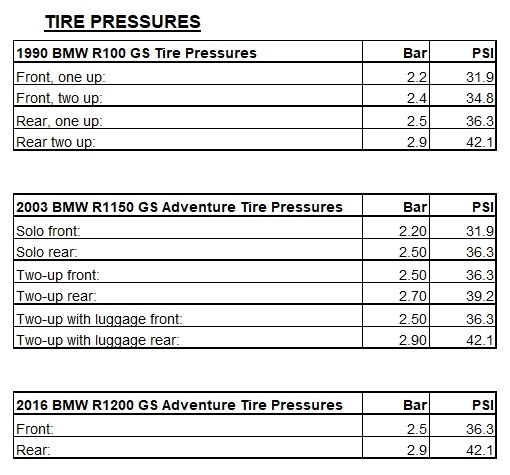globalrider
Alps Adventurer
Checked my Owner's Manual the other day and there is a single front and rear tire pressure for my 2016 R1200 GSA. And it looks like it is based on an all up weight.
Yet for my 1990 R100 GS and 2003 R1150 GSA, they list numerous pressures based on solo, dual and luggage. Go figure and yes, I realize I can reduce pressures, but why did BMW not list tire pressures as they did on previous models?

Yet for my 1990 R100 GS and 2003 R1150 GSA, they list numerous pressures based on solo, dual and luggage. Go figure and yes, I realize I can reduce pressures, but why did BMW not list tire pressures as they did on previous models?



